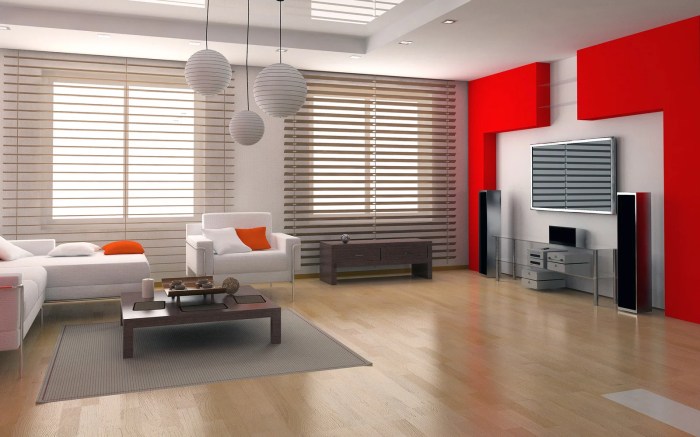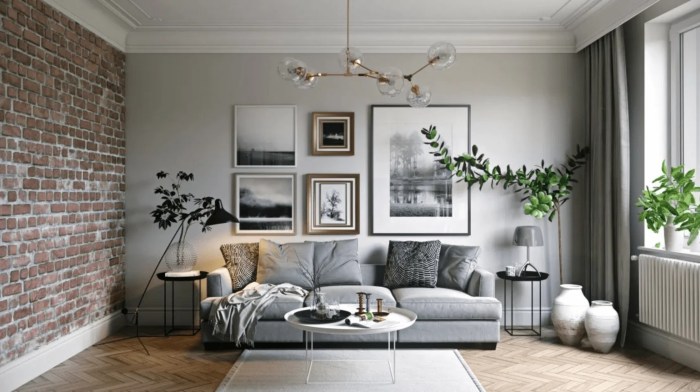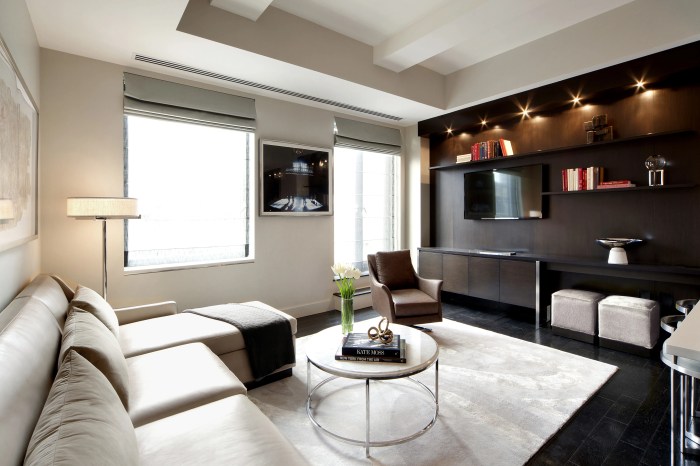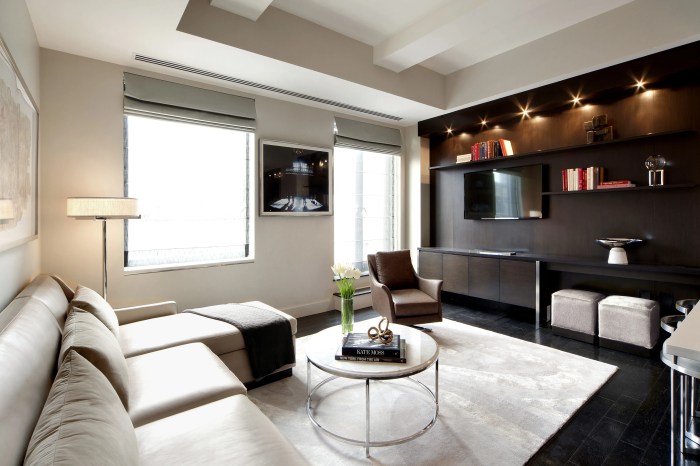Best House Interior Design: Creating Your Dream Home
Best house interior design isn’t just about aesthetics; it’s about creating a space that reflects your personality and enhances your life. From choosing the perfect color palette to selecting furniture that complements your style, every decision contributes to the overall feel of your home.
This guide explores the key elements of interior design, from understanding fundamental principles to incorporating personal touches. We’ll delve into the importance of functionality, the power of color, and the impact of lighting. You’ll learn how to create a harmonious and inviting space that reflects your unique taste and enhances your well-being.
Defining “Best” House Interior Design: Best House Interior Design
The concept of “best” in house interior design is inherently subjective, as it heavily relies on personal preferences, lifestyle, and individual tastes. What one person considers “best” may be completely different from another’s ideal. This subjectivity stems from the vast array of design styles, materials, colors, and functionalities that contribute to the overall aesthetic and feel of a space.
Factors Influencing Personal Preferences
Personal preferences in interior design are influenced by a multitude of factors, including:
- Lifestyle:A busy family may prioritize functionality and practicality, while a single individual may prefer a more minimalist and artistic approach.
- Personality:Introverts may favor calming and serene spaces, while extroverts might prefer vibrant and energetic environments.
- Cultural Background:Cultural influences can shape preferences for specific colors, patterns, and furniture styles.
- Personal Experiences:Past experiences, memories, and travel can inspire design choices.
- Current Trends:While not always the determining factor, current trends can influence design decisions, often reflecting the zeitgeist of the time.
Different Design Styles and Their Defining Characteristics, Best house interior design
The world of interior design encompasses a wide spectrum of styles, each with its unique characteristics and aesthetic appeal. Understanding these styles can help individuals identify their preferences and create a space that truly reflects their personality and lifestyle. Here are some prominent design styles and their defining features:
- Modern:Characterized by clean lines, minimalist furniture, neutral colors, and a focus on functionality. It often incorporates natural materials like wood and stone, with a preference for open floor plans.
- Contemporary:Similar to modern but with a more contemporary twist, embracing current trends and incorporating bold colors and patterns. It often features unique furniture pieces and a focus on statement lighting.
- Mid-Century Modern:This style draws inspiration from the mid-20th century, featuring organic shapes, geometric patterns, and a blend of natural and synthetic materials. Iconic furniture pieces from this era, like the Eames Lounge Chair, are often incorporated.
- Scandinavian:Known for its simplicity, functionality, and use of natural materials like wood and linen. It emphasizes light and airy spaces, often featuring white walls and minimalist furniture.
- Industrial:Inspired by industrial spaces, this style features exposed brick walls, metal accents, and reclaimed wood. It often incorporates vintage furniture and lighting fixtures, creating a raw and edgy aesthetic.
- Bohemian:A free-spirited and eclectic style that embraces color, patterns, and textures. It often incorporates global influences, vintage finds, and handcrafted elements, creating a unique and personalized space.
- Traditional:Characterized by classic furniture, rich colors, intricate details, and a sense of history. It often incorporates antique pieces, floral patterns, and ornate moldings, creating a timeless and elegant atmosphere.
- Farmhouse:This style evokes a rustic and cozy feel, featuring natural materials like wood, stone, and linen. It often incorporates farmhouse-inspired furniture, distressed finishes, and vintage accents, creating a warm and inviting space.
The Power of Color in Interior Design

Color plays a crucial role in interior design, impacting the mood, atmosphere, and overall feel of a space. Understanding the psychology of color and its influence on human perception is essential for creating visually appealing and emotionally resonant interiors.
The Psychological Effects of Different Colors
Color psychology explores the link between colors and human emotions, behaviors, and perceptions. Different colors evoke distinct psychological responses, making them powerful tools for interior designers. For example, warm colors like red, orange, and yellow are often associated with energy, excitement, and warmth, while cool colors like blue, green, and purple are linked to calmness, tranquility, and serenity.
- Red:A stimulating color that can increase heart rate and blood pressure, often associated with passion, energy, and aggression.
- Orange:A vibrant color that promotes creativity and optimism, often used to create a sense of warmth and comfort.
- Yellow:A cheerful and uplifting color that can enhance focus and concentration, but can also be associated with anxiety in large quantities.
- Green:A calming and refreshing color that evokes feelings of peace and harmony, often used in nature-inspired spaces.
- Blue:A serene and tranquil color that promotes relaxation and sleep, often associated with trust and security.
- Purple:A luxurious and sophisticated color that can stimulate creativity and intuition, but can also be associated with royalty and power.
How Color Influences Mood and Atmosphere
Color directly influences the mood and atmosphere of a space. By strategically using color, designers can create a range of emotions and experiences. For example, using warm colors in a living room can create a welcoming and inviting atmosphere, while cool colors in a bedroom can promote relaxation and sleep.
Examples of Color Palettes that Create Specific Moods and Effects
- Energizing and Uplifting:A combination of bright yellows, oranges, and reds can create a lively and stimulating atmosphere, perfect for spaces like kitchens, dining rooms, or playrooms.
- Calming and Relaxing:A palette of blues, greens, and purples can create a sense of tranquility and peace, ideal for bedrooms, bathrooms, or meditation spaces.
- Sophisticated and Elegant:Neutral colors like grays, beiges, and whites, combined with accents of gold, silver, or black, can create a sophisticated and elegant ambiance, perfect for formal living rooms or dining rooms.
- Warm and Inviting:A palette of warm browns, yellows, and oranges can create a cozy and welcoming atmosphere, perfect for living rooms, family rooms, or dining rooms.
The Importance of Furniture Selection

Furniture is the backbone of any interior design scheme. It not only defines the style and functionality of a space but also plays a crucial role in creating a welcoming and comfortable atmosphere. Furniture selection is an art that requires careful consideration of various factors, including style, size, and functionality.
Furniture Styles in Modern Interior Design
Modern interior design emphasizes clean lines, minimalist aesthetics, and a focus on functionality. Furniture styles that complement this approach often feature sleek silhouettes, neutral color palettes, and durable materials. Here are some popular furniture styles in modern interior design:
- Mid-Century Modern:This style is characterized by organic shapes, tapered legs, and a focus on functionality. Iconic pieces from this era include the Eames Lounge Chair and the Barcelona Chair.
- Scandinavian:Scandinavian design prioritizes simplicity, functionality, and natural materials. Furniture in this style often features light wood, minimalist designs, and comfortable upholstery.
- Contemporary:Contemporary furniture is characterized by its sleek lines, bold colors, and innovative materials. It embraces modern trends while maintaining a sense of timeless elegance.
Creating a Focal Point in Interior Design

A focal point is an element in a room that draws the eye and serves as the centerpiece of the design. It’s the first thing people notice when they enter a space and can greatly influence the overall aesthetic appeal.
Achieving the best house interior design involves careful planning and consideration of your personal style and needs. If you’re lucky enough to have a three-story home, you can explore even more creative possibilities. A 3 storey house interior design allows you to define distinct spaces for different purposes, whether it’s a quiet reading nook on the top floor or a vibrant entertainment area on the ground level.
The key is to create a cohesive flow throughout the entire house, reflecting your unique personality and making each level feel like a natural extension of the whole.
Creating a focal point adds visual interest, balances the room’s elements, and establishes a sense of hierarchy.
Finding the best house interior design can be a fun and rewarding experience. If you’re looking for a unique and rustic style, you might consider a barn house interior design. This style often incorporates natural materials like wood and stone, creating a warm and inviting atmosphere.
Ultimately, the best interior design for your home is one that reflects your personal style and preferences.
Creating Focal Points in Different Areas of the House
Focal points can be created in various ways, depending on the area of the house and the desired effect. Here are some tips for creating focal points in different areas:
Living Room
The living room is a prime location for a focal point, often centered around the television, fireplace, or a large piece of artwork.
- Fireplace:A fireplace naturally draws the eye, making it an ideal focal point. You can enhance its visual impact by adding a mantelpiece with decorative objects, a stylish fire screen, or a unique fireplace surround.
- Artwork:A large, bold piece of artwork can instantly transform a living room. Consider a statement painting, a gallery wall, or a sculptural piece. The placement should be strategic, allowing the artwork to dominate the space.
- Television:While a television can be a focal point, it’s essential to integrate it seamlessly into the design. A custom media wall with built-in shelving and lighting can elevate the television from a simple appliance to a design feature.
Dining Room
The dining room is often a place for gathering and celebrating, so the focal point should be inviting and elegant.
Achieving the best house interior design is a blend of functionality and aesthetics. A well-designed space should cater to your lifestyle and personal preferences. If you’re working with a two-story home, consider the potential of a 2 storey house interior design that maximizes space and creates a seamless flow between levels.
By carefully planning the layout and choosing the right furniture and decor, you can transform your house into a beautiful and comfortable home.
- Chandelier:A stunning chandelier can transform the dining room into a glamorous space. Choose a chandelier that complements the room’s style and scale, and ensure it’s positioned above the dining table for maximum impact.
- Dining Table:The dining table itself can be the focal point. A unique shape, intricate design, or a statement table runner can make the table a standout feature.
- Window Views:If the dining room has beautiful window views, consider using them as the focal point. Maximize the view by keeping the windows unobstructed and using sheer curtains or blinds.
Bedroom
The bedroom should be a haven of peace and relaxation. The focal point should be calming and conducive to sleep.
- Bed:The bed is typically the focal point of the bedroom. A headboard with a unique design or an upholstered bed frame can elevate the bed’s presence.
- Accent Wall:A bold accent wall behind the bed can add visual interest and create a sense of depth. Use a contrasting color, wallpaper, or textured paint for a striking effect.
- Mirror:A large mirror can create the illusion of more space and reflect light, making the bedroom feel brighter. Place it opposite a window or over a dresser for maximum impact.
Final Review
Ultimately, the best house interior design is one that you love and feel comfortable in. By understanding the principles of design, incorporating your personal style, and embracing sustainable practices, you can create a home that truly reflects your personality and enhances your everyday life.
FAQ Resource
What are some common interior design mistakes to avoid?
Overcrowding a space, neglecting lighting, ignoring functionality, and not considering the flow of traffic are common mistakes. It’s important to plan and think through your design choices before making any major decisions.
How can I make my small space feel bigger?
Using light colors, mirrors, and multi-functional furniture can create the illusion of more space. Avoid bulky furniture and consider vertical storage solutions.
What are some budget-friendly ways to upgrade my home’s interior?
Updating paint colors, adding throw pillows and blankets, rearranging furniture, and incorporating plants are cost-effective ways to refresh your home’s look.
What is the best way to incorporate personal style into my interior design?
Display artwork, family photos, travel souvenirs, and items that reflect your hobbies and interests. Incorporate your favorite colors, patterns, and textures to create a truly personalized space.

